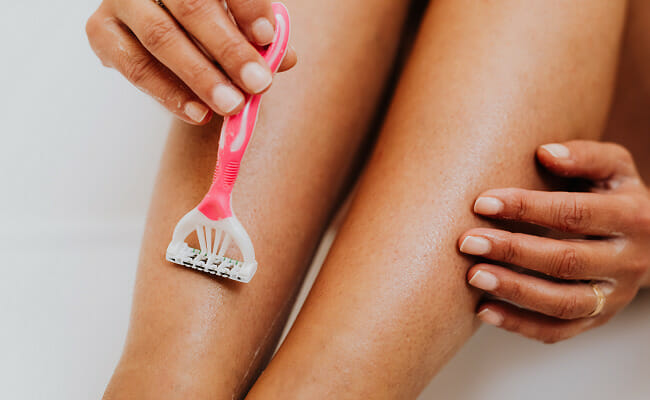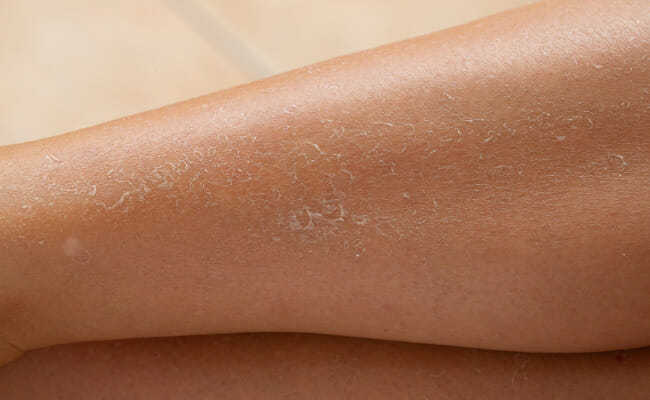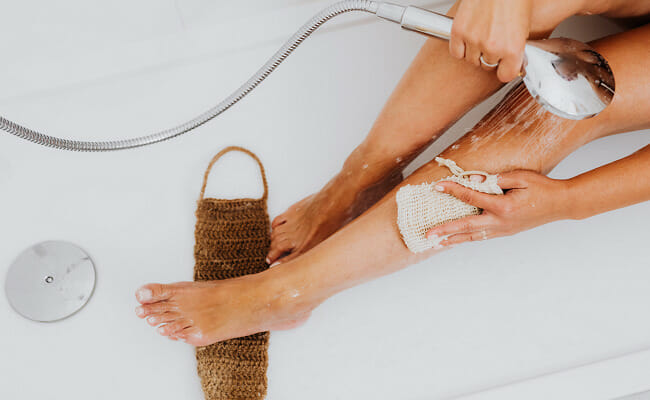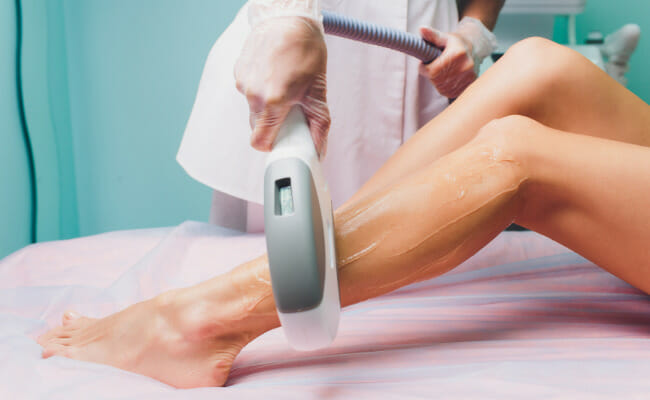How to Get Rid of Strawberry Legs
Have you ever shaved your legs and observed a cluster of little black spots? It’s not just you. The tiny black spots could mean two things to many women: a source of annoyance or embarrassment. The cluster of black dots is a typical sign of various skin disorders called “strawberry legs.”
Having strawberry legs can be both embarrassing and frustrating. Fortunately, you can do a few things to get rid of them. This blog post will discuss the causes of strawberry legs and how to treat them. We will also cover some prevention tips to help you keep your legs looking smooth and healthy. Let’s get started!
What are strawberry legs?

Strawberry legs, also called strawberry skin, develop when your hair follicles or pores are clogged with dirt, dead skin, bacteria, or oil. Strawberry legs resemble small black dots or dark spots and don’t usually itch or cause pain. However, they can be embarrassing for people who have them.
When do strawberry legs occur?
Strawberry legs occur after shaving or waxing, which exposes clogged pores. Strawberry legs could appear as an underlying skin condition or infection. Having this skin condition will not cause pain or itching. But if you notice pain, swelling, or itching, don’t self-medicate. Make an appointment with a dermatologist to rule out other conditions.
What are the common causes?
1. Shaving tops the list
Shaving ‘improperly’ with a dull razor is the leading culprit. So is shaving without using shaving cream. Blade burn and strawberry legs can result from shaving in this manner. Additionally, it may lead to ingrown hairs, causing strawberry legs, especially for those with thick hair.
In some cases, the skin around the follicle may darken in response to the irritation from shaving, increasing the dark appearance.
2. Folliculitis
An infected hair follicle or inflamed (swollen) frequently results in folliculitis, a common skin infection. It might happen due to shaving, waxing, or excessive perspiration, particularly in warm and muggy weather. Many people experience folliculitis after exercising or relaxing in a hot tub. The little red pimples, which you can mistake for acne, frequently itch or irritate.
3. Having clogged pores
Pores are tiny or microscopic holes on the skin that allow sweat and oil to escape, keeping your body cool. Sometimes bacteria, dead skin, oil, or dirt can clog them. Adolescents typically create more oil than non-puberty individuals when going through puberty.
By shaving or waxing your legs, you expose oil to the air. Dr. Janik adds, “The oil reacts with oxygen (oxidizes), turns darker than usual, and gives you little black dots all over your legs. As a result, the “strawberry legs” effect occurs.
4. Dry skin
Having dry skin alone is not the leading cause of strawberry legs condition. If you have dry skin and shave it, there’s a greater chance of developing black or red spots on your legs. Strawberry legs become highly visible when you have dry skin on your legs.
5. Keratosis pilaris condition
Although strawberry legs are a distinct disorder, keratosis pilaris can result in a cluster of red dots on your legs. Keratosis pilaris is a different skin condition and could be mistaken for strawberry legs.
Dermatologist Leonard Bernstein, MD, explains that keratosis pilaris occurs on the upper outer arms, thighs, cheeks, and lower legs. He added that it is primarily a seasonal or episodic eruption in 10-15% of the population. It is evident when dead skin cells clog hair follicles. When this happens, your skin develops rash-like bumps that look like goosebumps.
Others compare these bumps to zits or chicken skin. The bumps are rough and can come in different colors. The keratosis pilaris color ranges from the same shade as your skin to more vivid hues like purple and red.
How to get rid of strawberry legs
Making certain adjustments to your self-care routine at home will eliminate strawberry legs. Here are some tips:
1. A sharp razor and moisturizing shaving cream will do the trick
Before you start shaving, check your razor first. Shave along the direction of hair development while applying a moisturizer that keeps your skin warm and comfortable. The technique lessens the risk of strawberry legs by reducing razor bumps and burns. Gently shave using short, gentle strokes. Ideally, it would help if you shaved your legs during or right after a shower so that your legs are free of any extra oil or dead skin that could block your razor.
Rinse your razor as you lightly shave. To prevent irritation, be careful to swap out the blade or discard disposable razors after about six shavings, And to prevent bacteria from growing on it, store your razor in a cold, dry place. Keep it out of the shower.
2. Exfoliating skin is vital
Smooth, velvety skin appeals to everyone, which helps prevent strawberry legs. Exfoliating eliminates dead skin cells and facilitates the growth of new hairs. It is more difficult for pores or follicles to clog.
Use a clean washcloth or loofah to scrub your legs, then moisturize to keep your skin nourished. Additionally, moisturizing can make strawberry legs seem better and help stop further outbreaks. But stay away from items that have colors or scents in them.
Use a dry brush, body scrub, or glove that helps smooth skin while removing oil and grime from pores, advises Dr. Janik. “Do gentle motions and a mild product that won’t irritate the skin and make things worse.”
3. Try using an epilator
You can try using an epilator, a personal electrical care gadget that removes hair from the root. It’s similar to waxing but less damaging to your skin. Additionally, unlike waxing or shaving, it doesn’t run the risk of resulting in folliculitis.
The epilator works like a pair of solid tweezers, so be prepared for some discomfort or a pang of pain. As an alternative method of hair removal, it may be more tolerable because you only apply it once every two to three weeks.
4. Explore permanent hair removal
Do you find shaving or waxing a tiresome routine for hair removal? Consider permanent hair removal as a safe and effective option. Dr. Janik shares two standard methods you can check.
Electrolysis uses a low electrical current to take out the hair. Slight discomfort may happen during the procedure. You may need several sessions before seeing a difference. The electrolysis technique typically doesn’t have any side effects.
The laser hair removal procedure uses a laser to remove hair precisely. Two to six sessions are needed to get the best result. People undergoing laser hair removal may experience side effects such as burns, scars, or skin color changes in the areas where they removed the hair.
How to avoid strawberry legs? Best to treat the skin condition at its source. Individuals with thick or curly hair can benefit from electrolysis and laser hair removal options.
Although effective, both laser hair removal and electrolysis procedures are pricey. Both processes require several sessions. Sometimes, hair can grow back. Before getting either method, consult your dermatologist for the best option.
Permanent hair removal is a safe alternative if shaving or waxing isn’t working or you’re tired of ongoing maintenance.
There are two standard techniques:
Electrolysis uses a slight electrical current to remove hair. It may take a few sessions to notice a distinct difference. While in session, you might feel some mild discomfort. Generally speaking, this method has no adverse effects.
On the other hand, a laser is used in laser hair removal to eliminate hair accurately. Two to six sessions are required—Burns, scars, or changes in skin tone where the laser removed hair are possible side effects.
According to Dr. Janik, treating the issue at its root is the best method to prevent strawberry legs. “People with thick, coarse, or curly hair are especially suitable candidates for electrolysis and laser hair removal.”
However, electrolysis and laser hair removal can be pricey. These “permanent” choices also don’t usually last. Some hair can grow back, necessitating more treatments.
5. Get help with medical therapies
Dermatologists occasionally suggest chemical exfoliants or drugs exfoliate dead skin cells. Without the irritation that rubbing can bring, these remedies can aid in treating or preventing strawberry legs. They break down the skin cells, making them easily removable with water.
You may use skin care products that could have Alpha-hydroxy acids (AHA), Beta-hydroxy acid (salicylic acid), Glycolic acid, and Retinoids. Do note that these ingredients may make your skin sensitive to sun exposure. Don’t forget to apply sunscreen to prevent skin burns or damage when you go outside.
Conclusion
Don’t cry buckets over strawberry legs; it is a treatable condition with routine exfoliation and moisturizing. Consult your dermatologist if you think your symptoms may be coming from another illness or infection.
Your dermatologist will provide the best solution to address this skin condition. A prescription of antibiotics or corticosteroids could help. With proper care and attention, those dark black and red spots will disappear with a bit of love.







